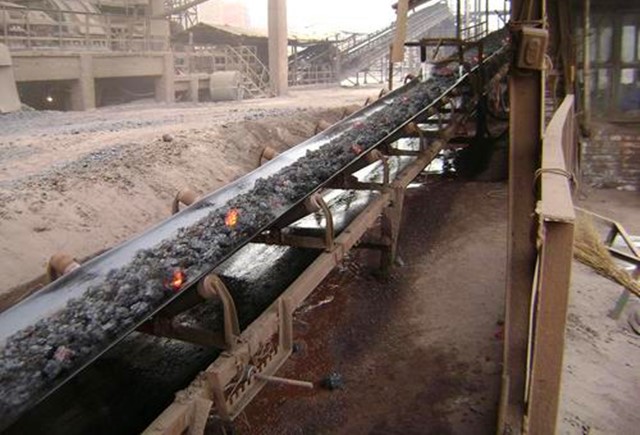
Image Source: Google
Conveyor belts are critical components in various industries, facilitating the efficient transportation of materials within a facility. However, in environments with extreme temperatures, such as those found in steel mills, cement plants, and other industrial settings, standard conveyor belts are not sufficient. To withstand high temperatures and harsh conditions, heat-resistant conveyor belts are essential. If you are looking for heat resistant conveyor belt, you should check Monster Belting.
The Importance of Heat-Resistant Conveyor Belts
Industrial processes often involve materials that are hot and abrasive, making it crucial to have conveyor belts that can withstand such conditions. Heat-resistant conveyor belts are specifically designed to handle high temperatures, ensuring the safe and efficient transport of materials in extreme environments. Some key reasons for the importance of heat-resistant conveyor belts include:
Key Features of Heat-Resistant Conveyor Belts
- Ability to withstand temperatures ranging from 150°C to 300°C
- Resistant to abrasion and wear from hot materials
- Excellent heat retention properties
- High tensile strength and flexibility
- Resistance to cracking and hardening
Applications of Heat-Resistant Conveyor Belts
Heat-resistant conveyor belts find applications in a wide range of industries where high temperatures are prevalent. Some common industries that rely on these specialized belts include:
- Steel manufacturing
- Cement plants
- Foundries
- Glass manufacturing
- Recycling facilities
Technology Behind Heat-Resistant Conveyor Belts
The design and construction of heat-resistant conveyor belts involve advanced technology to ensure their durability and performance in extreme conditions. Some key technologies used in the production of these belts include:
Materials Used
The choice of materials is crucial in ensuring the heat resistance of conveyor belts. Some common materials used in heat-resistant belts include:
- Carbon fiber
- Kevlar
- Silicone rubber
- Neoprene
- High-temperature resistant polymers
Specialized Coatings
Special coatings are applied to heat-resistant conveyor belts to enhance their performance. These coatings provide additional protection against heat, abrasion, and wear, ensuring the longevity of the belts. Some common coatings used include:
- PTFE (Polytetrafluoroethylene)
- PU (Polyurethane)
- Neoprene
- Flame-retardant materials
Advanced Vulcanization Process
Heat-resistant conveyor belts undergo a specialized vulcanization process to enhance their thermal properties. Vulcanization involves the application of heat and pressure to the belt, bonding the materials together and increasing their resistance to high temperatures. This process ensures the structural integrity of the belts even in extreme heat conditions.
Maintenance and Care of Heat-Resistant Conveyor Belts
To ensure the longevity and performance of heat-resistant conveyor belts, proper maintenance and care are essential. Some key maintenance practices for heat-resistant belts include:
Regular Inspections
Inspect the belts regularly for signs of wear, damage, or degradation. Address any issues promptly to prevent further damage.
Cleaning and Lubrication
Keep the belts clean and free from debris that could cause abrasion. Proper lubrication can also help reduce friction and extend the life of the belts.
Temperature Monitoring
Monitor the temperature of the belts regularly to ensure they are operating within safe limits. Excessive heat can cause damage to the belts and compromise their performance.
Conclusion
Heat-resistant conveyor belts play a crucial role in industries where extreme temperatures are a common challenge. By leveraging advanced materials, coatings, and manufacturing processes, these specialized belts are able to withstand high temperatures and harsh conditions, ensuring the safe and efficient transportation of materials. Proper maintenance and care are also essential to maximize the longevity and performance of heat-resistant conveyor belts, making them a reliable solution for navigating extreme conditions in industrial settings.
